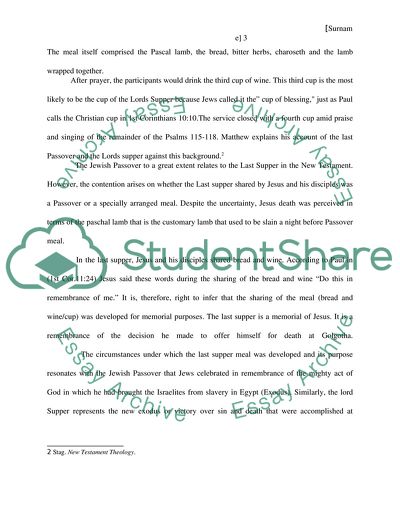Cite this document
(Synopsis of the Last Supper Accounts Literature review Example | Topics and Well Written Essays - 2000 words, n.d.)
Synopsis of the Last Supper Accounts Literature review Example | Topics and Well Written Essays - 2000 words. https://studentshare.org/religion-and-theology/1839038-the-last-supper-a-synopis-of-the-accounts-of-the-last-supper
Synopsis of the Last Supper Accounts Literature review Example | Topics and Well Written Essays - 2000 words. https://studentshare.org/religion-and-theology/1839038-the-last-supper-a-synopis-of-the-accounts-of-the-last-supper
(Synopsis of the Last Supper Accounts Literature Review Example | Topics and Well Written Essays - 2000 Words)
Synopsis of the Last Supper Accounts Literature Review Example | Topics and Well Written Essays - 2000 Words. https://studentshare.org/religion-and-theology/1839038-the-last-supper-a-synopis-of-the-accounts-of-the-last-supper.
Synopsis of the Last Supper Accounts Literature Review Example | Topics and Well Written Essays - 2000 Words. https://studentshare.org/religion-and-theology/1839038-the-last-supper-a-synopis-of-the-accounts-of-the-last-supper.
“Synopsis of the Last Supper Accounts Literature Review Example | Topics and Well Written Essays - 2000 Words”. https://studentshare.org/religion-and-theology/1839038-the-last-supper-a-synopis-of-the-accounts-of-the-last-supper.


